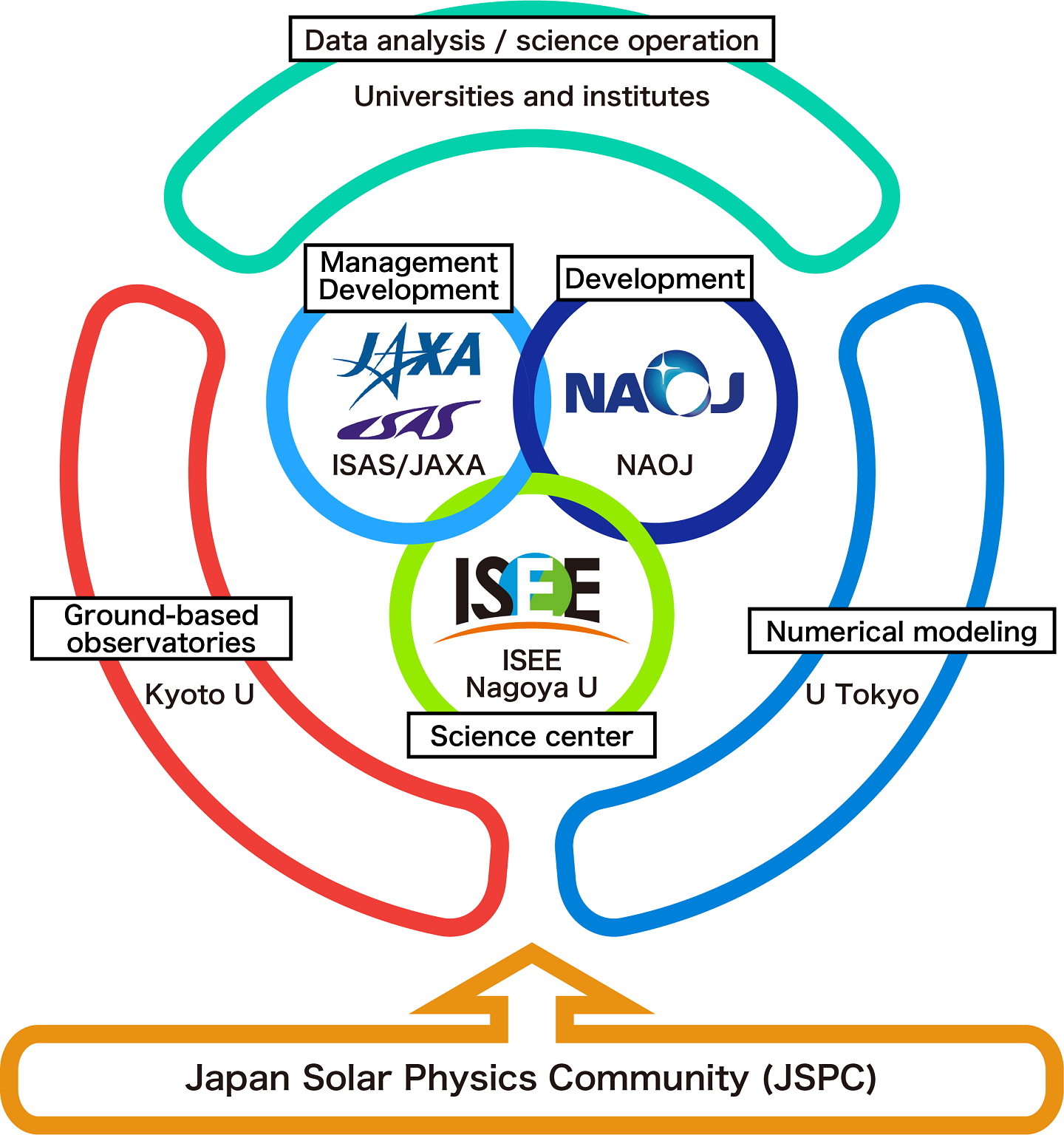Organization
SOLAR-C is a mission of international cooperation led by Japan with partners in the US and Europe.
01. Domestic
SOLAR-C is a mission of international cooperation with Japan, US (NASA), and the European countries (ESA and individual agencies), with a target launch in mid-2020s. The Japan's domestic structure is led by ISAS/JAXA and NAOJ, which are in charge of developing the spacecraft and its telescope EUVST. The general management of this mission is done by ISAS/JAXA, whereas NAOJ leads the telescope development and also participates in the development of the satellite system and the grating.
Science operation of the spacecraft after launch is to be done in ISAS/JAXA, in cooperation with NAOJ and the scientists in the universities all over Japan. The Institute for Space-Earth Environmental Research (ISEE) of Nagoya University will operate the science center, which provides the calibrated downlinked observational data and the data analysis environment to the scientists. Kwasan and Hida Observatories, Kyoto University, coordinate the domestic and international ground-based observations with SOLAR-C. In addition, the research group in School of Science, the University of Tokyo, will play a leading role in the coordination with numerical modeling, which is crucial in interpreting the observational data. Furthermore, this project is defined as the "plan to be realized with the highest priority" by the Japan Solar Physics Community (JSPC: about 200 members).

02. International
The SOLAR-C project has participated from Europe (ESA and the space agencies of Germany, France, Italy, and Switzerland) and US (NASA). These institutions will build the detectors, fabricate the grating, and lead the integration and verification of the EUVST components. European space agencies have submitted the Letters of Intent (LoI) to JAXA and support the technical studies carried out in the institutes. In July 2017, the study report on the primary space solar missions in the 2020s was published by the Next Generation Solar Physics Mission - Science Objective Team (NGSPM-SOT), chartered by NASA, ESA, and JAXA. In this report, the SOLAR-C mission is defined as the mission to be realized with the top priority.
